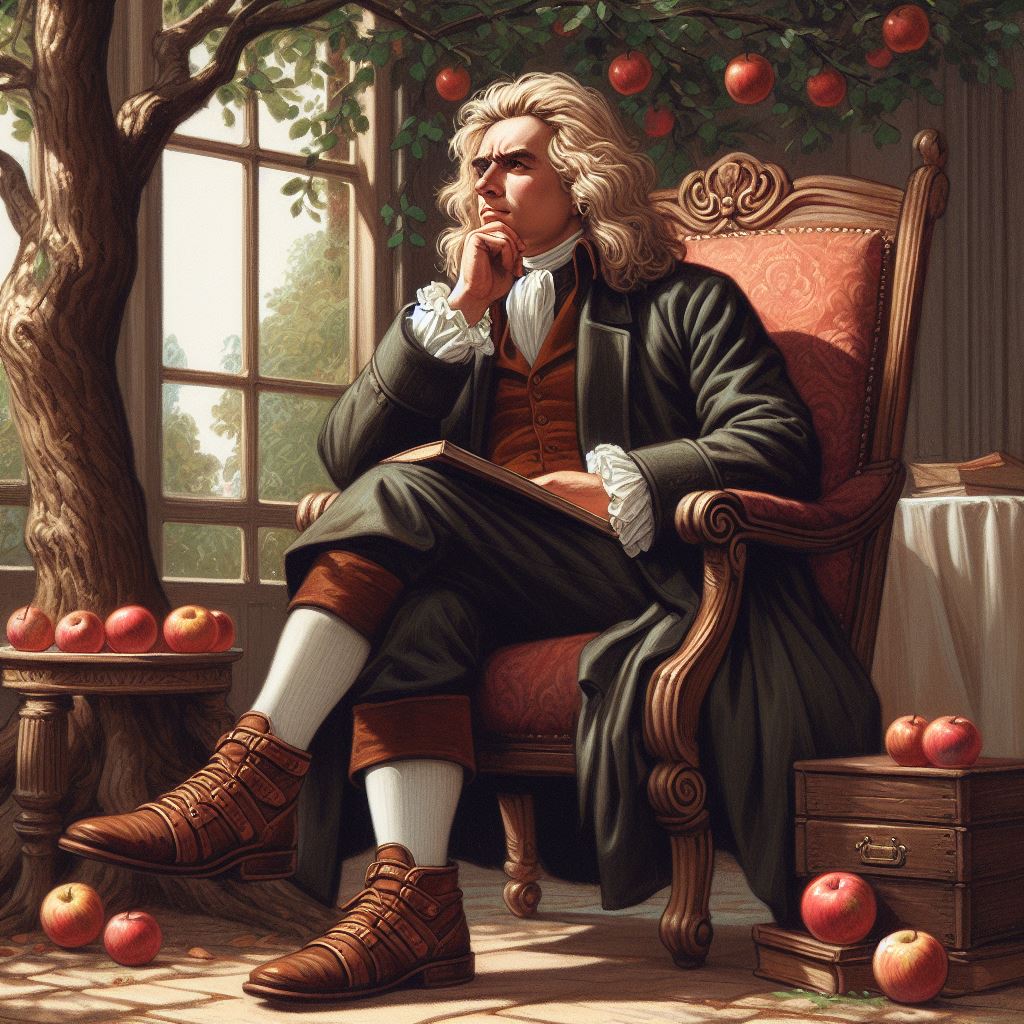Introduction:
Welcome to our exploration of one of the cornerstones of classical physics: Newton’s laws of motion. Centuries ago, Sir Isaac Newton revolutionized our understanding of the physical world with his profound insights into the behavior of objects in motion.
Born in 1642 in Woolsthorpe, England, Newton was a polymath whose contributions to science spanned mathematics, astronomy, and optics. Yet, it was his work in mechanics that would leave an indelible mark on the scientific landscape. In 1687, Newton published his magnum opus, the “Philosophiæ Naturalis Principia Mathematica” (“Mathematical Principles of Natural Philosophy”) in which he laid out his three laws of motion alongside his law of universal gravitation.
Newton’s laws of motion provide the framework for understanding how objects move and interact under the influence of forces. Let’s dive straight into them!
Newton’s First Law of Motion:

Newton’s first law of motion, often referred to as the law of inertia, states that an object at rest will remain at rest, and an object in motion will continue in motion with constant velocity unless acted upon by an external force. In simpler terms, objects tend to maintain their state of motion unless compelled to change by an external influence.
Consider a ball resting on a frictionless trolley. According to Newton’s first law, the ball will remain stationary unless an external force, such as a push or a pull, is applied to set it in motion. Likewise, once the ball is in motion, it will continue moving at a constant velocity along the trolley unless acted upon by another force.
Newton’s Second Law of Motion:

Newton’s second law of motion states that the force acting on an object is directly proportional to its mass and the acceleration it undergoes. In simpler terms, this law tells us that the greater the force applied to an object, the greater its acceleration will be, but also that heavier objects require more force to accelerate at the same rate as lighter objects.
Imagine a boy pushing a trolley in a supermarket. The harder he pushes (the greater the force), the faster the trolley accelerates. However, if he tries to push a loaded trolley compared to an empty one, he’ll notice that it requires more force to achieve the same acceleration due to the increased mass.
Another example could be throwing a ball. Applying a stronger force by throwing the ball harder will result in a greater acceleration, causing it to travel farther. However, throwing a heavier ball with the same force will result in a slower acceleration and shorter distance traveled due to its greater mass.
In both examples, Newton’s second law illustrates the fundamental relationship between force, mass, and acceleration, providing a quantitative framework for understanding the dynamics of motion.
Newton’s Third Law of Motion:

Newton’s third law of motion states that for every action, there is an equal and opposite reaction, but they act in two different directions. This principle elucidates the symmetrical nature of forces in nature, revealing that when one object exerts a force on another, the second object simultaneously exerts an equal and opposite force on the first.
Consider an astronaut in the vacuum of space attempting to maneuver. When the astronaut throws a heavy object away from themselves, such as discarding a tool during a spacewalk. The force exerted by the astronaut’s hand propels the object forward. Simultaneously, according to Newton’s third law, an equal and opposite force is exerted on the astronaut in the opposite direction, causing them to move backward. This action-reaction pair allows astronauts to navigate and manipulate objects in the weightless environment of space.
Another example can be observed in the recoil of firearms. When a gun is fired, the bullet is propelled forward by the force of expanding gases within the barrel. Simultaneously, an equal and opposite force is exerted on the gun in the opposite direction, causing it to recoil backward into the shooter’s shoulder.
Newton’s third law of motion underscores the interconnectedness of all physical interactions. In other words, demonstrating the delicate balance of forces that govern motion in our universe.
Personalized Online Physics Classes!
Join our tailored one-on-one physics classes designed to elevate your understanding of school-grade concepts, excel in standardized tests, and ignite your passion for physics! Experience engaging sessions led by expert tutors who make learning enjoyable and effective.
Applications and Implications:
Newton’s laws of motion find wide-ranging applications across various fields, from engineering to everyday life. They are instrumental in designing vehicles, predicting the trajectories of projectiles, and understanding the behavior of celestial bodies. Moreover, these laws underpin the development of technologies like in propulsion systems.
Here are a few articles written by the third parties who share the more detailed and inter-connected concepts to follow:
- Pre-requisites for understanding Newton’s law in detail.
- Learn to draw free body diagrams, for numerical analysis!
- Find numerical on conservation of momentum, here.
- Learn about impulse, momentum and second law of newton, with illustrations.
- Important theorem: Work – Energy correlation, click here!
Links to the articles above are not the endorsements of any SEO companies or services, nor an endorsement of any general advice given by them. We simply found the articles themselves helpful for those who want to conceptualize the topics related to Newton’s laws.
